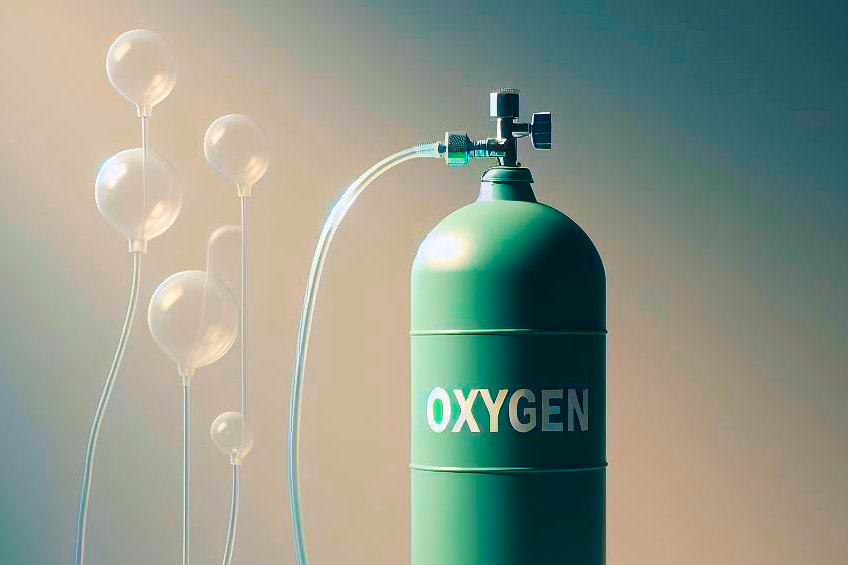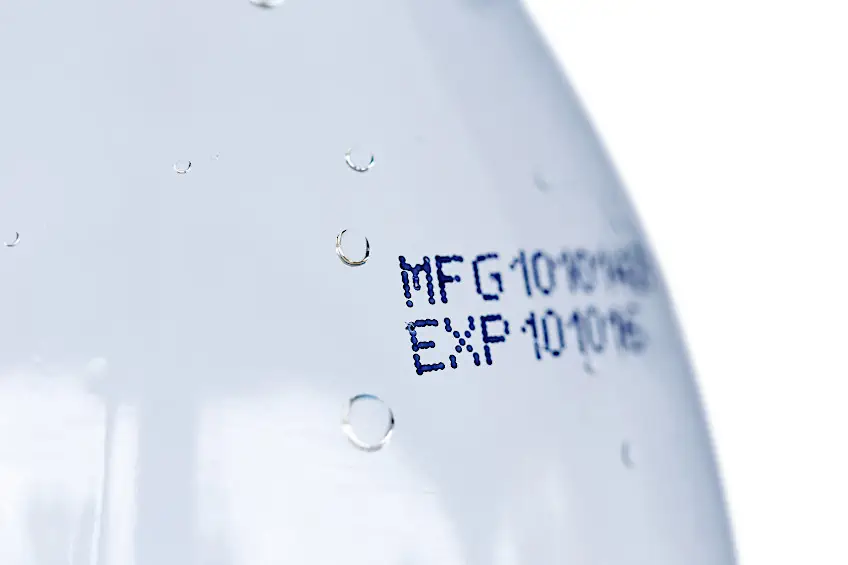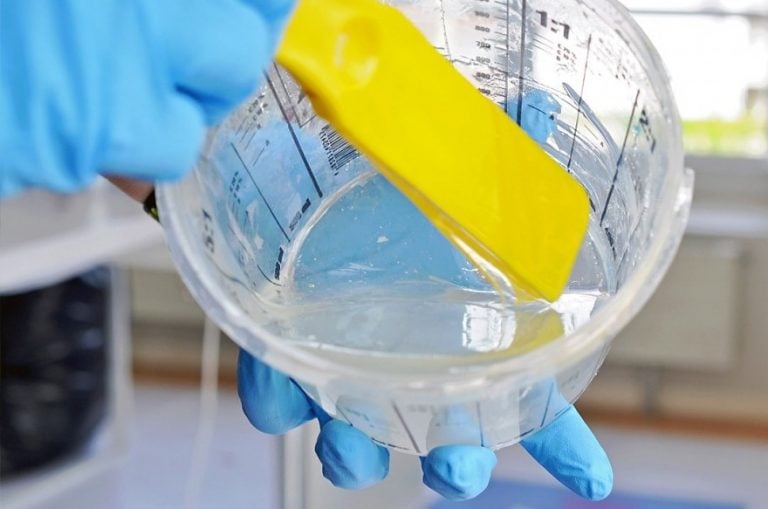How to Fix Yellowed Epoxy – Resin Ambering Prevention and Cure
This post may contain affiliate links. We may earn a small commission from purchases made through them, at no additional cost to you.
If you are an avid crafter, you have probably seen two-part resin turn yellow over time, specifically the hardening part of the solution. This can be off-putting and make you hesitant to use your resin. So, is yellowed epoxy recoverable? Can it be fixed after it’s hardened? Let’s find out how to fix yellowed epoxy, what causes this change in color, and how to avoid this in the future.
Table of Contents
Why Does Epoxy Yellow Over Time?
Epoxy that has been stored for more than a couple of months tends to yellow over time and may appear unusable at first glance. While this can be true, it’s important to understand why epoxy becomes yellowed in the first place so you can avoid this in the future and potentially reverse the process if you find yourself in a pickle.
Why does epoxy turn yellow then? Epoxy turns yellow for the same reason that certain metals rust, namely oxidation.
Overexposure to the immediate atmosphere “contaminates” the epoxy mixture, causing a reaction between it and air trapped inside the container. This is very common and will happen over a long enough period of time whether the epoxy has been opened previously or not. That being said, epoxy hardener will take significantly longer to yellow if the container has never been opened. Unopened epoxy hardener usually has a lifespan of around 6 months and will only begin to degrade around this time. However, if the container has been opened it can begin to yellow as soon as three months in.

As you can imagine this can be quite frustrating and rather confusing if you just wanted to save a little bit of epoxy for a later date. Sunlight is another factor that can influence how quickly your epoxy hardener yellows, as the UV light can affect the hardener on a molecular level causing an unwanted reaction that results in a yellowish tint throughout the compound.
How to Keep Resin from Yellowing
Since epoxy oxidizes similarly to metal, it’s not a stretch to assume that there are some steps you can take to ensure your epoxy does not yellow over time. To equip you with the knowledge of how to store your epoxy correctly and prevent your existing workpieces from hardening we have prepared a short list of preventive measures you can follow. Here’s how to keep resin from yellowing.
Keep Your Resin Out of Sunlight
While we mentioned this previously, there’s a bit more you should know about resin and how it interacts with UV light. While resin hardener can become yellow if it is exposed to sunlight while still in its container, it is also possible for a resin that has already hardened and cured to become yellow over time if exposed to excessive sunlight.

That’s right, if you have covered your countertops or wooden furniture in a resin coating they can also become yellowed over time. If you are going to coat your furnishings with resin it’s best to ensure they aren’t exposed to sunlight (or any other source of UV light) for prolonged periods of time, whether this means closing your curtains/blinds or covering these surfaces with a blanket or tarp.
Reduce Exposure to Oxygen
As with metals, oxidation is caused by moisture and oxygen affecting the molecules of the resin. The less contact it has with these elements of the atmosphere the longer it will last and the smaller the chance it has of yellowing over time. Considering that the atmosphere is abundant with oxygen we think it’s a bit unrealistic to aim for zero exposure. Therefore, opening your resin to test it can be risky business. The second you open the container you have essentially halved the lifespan of your resin, so if you don’t intend to use your resin in some capacity, it’s best to leave the container closed.

However, you can minimize the amount of oxygen your hardener is exposed to. Simple things like ensuring that the container is properly sealed before you put it away, or using a self-sealing dispenser instead of a removable lid can greatly reduce the amount of oxygen your resin hardener is exposed to over the course of its life.
Keep in mind that opened resin will still last you around 3 months if not longer should it be stored correctly.
Measure Precisely
As the saying goes “measure twice, cut once”. While you won’t be cutting your raw resin, you can greatly reduce the amount of pours you need per project if you measure exactly how much resin you will need beforehand. This can limit the amount of time your container spends open, and by extension how much atmospheric exposure it gets.

How do you measure how much resin you need? Well, if you are pouring flat then a simple surface area calculation will tell you how big the surface is and roughly how much resin you will need for a thin coat by converting your surface area to a volume measurement.
The same method can be applied (albeit much easier) when calculating the right amount for deep-pour projects, as your measurements will immediately tell you how much you need.
How to Fix Yellow Epoxy
Whether your epoxy hardener turned yellow in the container, or an existing workpiece has yellowed over time there are a few ways you can go about correcting this change. Below we have listed a few ways you can remove the yellow tint from both your epoxy hardener while it is still in the container and solid resin once it has already dried and cured.
Salvaging Epoxy Hardener That Has Yellowed
If your epoxy hardener turned yellow while it was in the container it can be a bit off-putting. The good news is that it will still be completely usable and you won’t need to make any changes (add anything) to the mixture to ensure that it becomes clear or whichever color the resin is intended to be once it has dried and cured completely. How is this possible?
When resin and hardener are mixed, they undergo a thermic reaction under which a lot of heat is created.
This process will often dissipate any yellowing that has happened over time, which means that you don’t really have to worry about resin hardener that has developed a yellow tint unless it is far past its expiry date.

Salvaging Hardened Primer That Have Yellowed
If you have been working with epoxy resin for a long time, then you have probably seen your fair share of resin surfaces that have yellowed over time. Solid resin can develop a yellow tint or little yellow spots inside the coating of our filled area for two reasons, namely a result of excessive exposure to UV light or a failure to dry at the same rate as the rest of the surface.
Yellowed Surfaces
Thankfully, there are ways to treat both types of yellowing, albeit with varying degrees of effort. First, we’ll tackle resin-coated surfaces that have taken on a yellowish tint due to exposure to sunlight. If the surface coating has hardened and cured, pretty much your only choice is to resurface the affected area of your workpiece.

You won’t have to remove the entire coating, just the layer that has yellowed over time. This is best done with sandpaper or a power sander to save time, and once the yellowed layer has been removed a new layer of epoxy can be poured, restoring your surface coating.
However, we would recommend removing the entirety of the surface coating and replacing it with a UV-resistant resin if possible.
Yellow Spots
Yellow spots occur when a spot has not dried and cured along with the rest of the surface. This can be a result of an air pocket in the pour, an uneven application of resin, or imperfections on the surface of your workpiece.
The best way to get rid of the problem is to rub the affected area with isopropyl alcohol continuously until the yellow spots disappear.
We recommend using blue work rags as they are robust enough to handle continuous friction, but if you can’t get your hands on some, a couple of sheets of paper towel will do the trick as well. You should know that if you remove yellow spots using this method it will leave a little indent in the resin, so if this isn’t acceptable simply leave the yellow spots alone or cover them up.
That’s all you need to know about how to fix yellowed epoxy. Remember that the only reasons epoxy yellows are from oxidation, exposure to sunlight, or incomplete drying/curing. If you cover these bases, you should have a perfectly functional and aesthetically pleasing pour, so do your best to check everything we’ve mentioned to achieve the best results possible.
Frequently Asked Questions
Why Did My Epoxy Turn Yellow?
Have you ever looked at an old epoxy workpiece and realized how yellow it has become? Why did my epoxy turn yellow if it was white before, you ask yourself? Well-dried epoxy generally turns yellow due to excessive exposure to UV light or sunlight, so ensure your workpiece is protected or use some UV-resistant resin in the future.
What Is the Natural Color of Epoxy Resin?
Natural resins like amber are yellow. By contrast, commercially produced epoxy resins are clear in liquid form, but dyes can be added to tint your resin pretty much any color you would like. Be sure to use a coloring agent graded for use with resin, as not all colorants are compatible with the resin curing process.
Is Epoxy Resin Food-Safe?
While it might not seem like it, epoxy resin is completely food-safe once it has cured and dried completely. Epoxy resin is commonly used to coat cutting boards and utensils, primarily because it is food-safe once dried and cured.
In 2005, Charlene completed her wellness degrees in therapeutic aromatherapy and reflexology at the International School of Reflexology and Meridian Therapy. She worked for a company offering corporate wellness programs for several years before opening her own therapy practice. In 2015, she was asked by a digital marketer friend to join her company as a content creator, and it was here that she discovered her enthusiasm for writing. Since entering the world of content creation, she has gained a lot of experience over the years writing about various topics such as beauty, health, wellness, travel, crafting, and much more. Due to various circumstances, she had to give up her therapy practice and now works as a freelance writer. Since she is a very creative person and as a balance to writing likes to be active in various areas of art and crafts, the activity at acrylgiessen.com is perfect for her to contribute their knowledge and experience in various creative topics.
Learn more about Charlene Lewis and about us.








